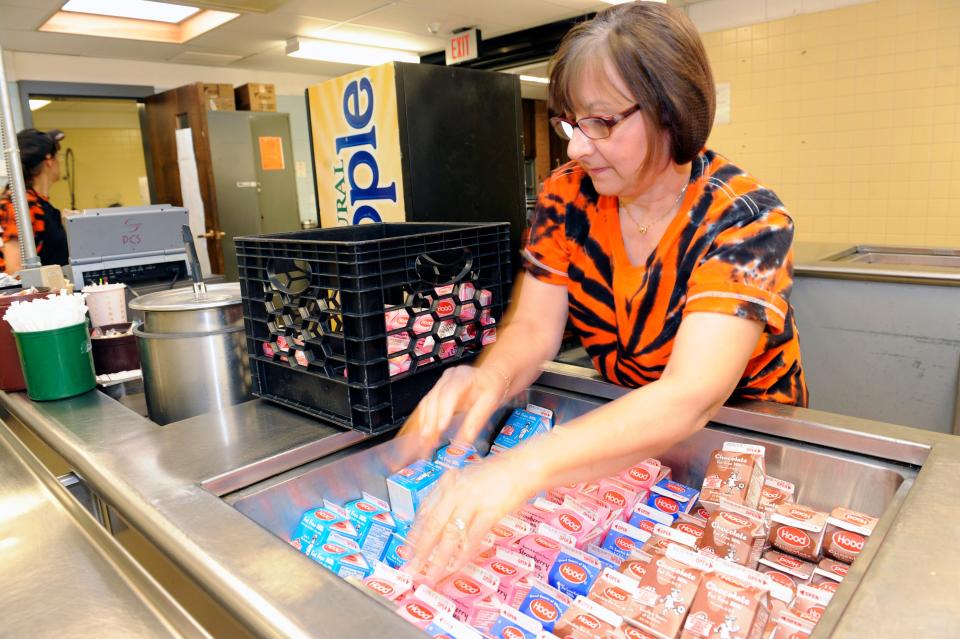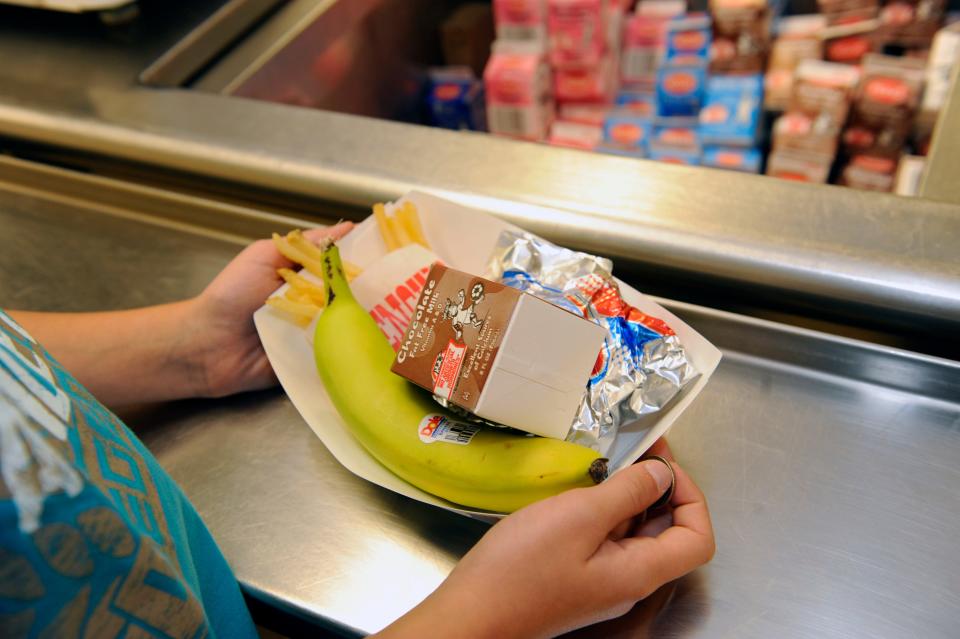'We’re just trying to feed kids:' Lunch prices in public schools spike amid budget cuts
On a plane in July, Nicole Melia traveled from Philadelphia to Denver to meet with other school nutrition directors from across the nation about challenges they expect when the new school year begins.
There was one conversation she expected to be the focus of the convening: Many schools are hiking the cost of lunches and breakfasts for kids this fall.
Between inflation and the end of a short-lived boost in additional federal subsidies for every school meal, it seemed inevitable, she said. On top of that, the federal government could soon force schools to serve healthier meals with less salt and sugar, which can make them more expensive to prepare and serve. These meals could require more freshly prepared food items and staff to cook from scratch.
"It’s really like doing sudoku on your plate to make sure we're meeting nutrition standards, meeting the budget constraints and meeting kids' palettes," said Melia.
The higher prices coming to her Great Valley School District in the fall could lead families at the six schools to find lunch elsewhere, she said.
Lately I feel like we’ve just been getting punched in the face on a regular basis, and we’re just trying to feed kids.
Jennifer Bove, food and nutrition director for East Hampton Public Schools in Connecticut
And if last school year was any indication, families who send their kids through their school's lunch line yet can't afford the costs but don't qualify for free meals could leave school systems to foot the bill.
That scenario is expected to play out across the country. Price increases for school meals are set to take effect in districts including the Nassau County School District in New York, the Canyon Independent School District in Texas and the Moore County Public School District in North Carolina.
End of subsidies; beginning of meal prices hikes
The federal government reimburses public schools for meals they serve to kids who qualify for free and reduced-price lunches and snacks based on income level. During the pandemic, Congress passed the Keep Kids Fed Act, which increased the amount the federal government pays schools for lunch by 40 cents and for breakfast by 15 cents for the 2022-23 school year. The aid expired June 30.
School leaders hoping the financial help would continue are now working to whittle their budgets to stay out of the red.
"Lately I feel like we’ve just been getting punched in the face on a regular basis, and we’re just trying to feed kids," said Jennifer Bove, a food and nutrition director for East Hampton Public Schools in Connecticut.
Many schools already experienced crippling school lunch debt since returning from the pandemic, said Diane Pratt-Heavner, a spokeswoman for the School Nutrition Association. Schools in America accrued $19.2 million in unpaid meal debt by November 2022 with a median of $5,164 per school, according to a national survey of school nutrition directors. Melia said debt in her school district has doubled from "what it usually would be" since schools reopened after remote teaching.
The School Nutrition Association, which represents more than 50,000 people who work on school meals across the nation, is urging the federal government to act.

"School meal programs need permanent reimbursement-rate increases to cope with long-term, higher labor costs – especially as many schools still struggle with labor shortages and need to raise wages to fully staff their kitchens," Pratt-Heavner said.
In addition, federal legislation granting all kids nationwide free school meals lapsed last September. That led to a 23% drop in the number of kids eating school lunches during 2022-23, federal survey results show.
The expiration of the aid left "schools with greater administrative and financial difficulties than ever before in serving healthy and affordable meals to students who need them," wrote Allie Pearce, Akilah Alleyne and Anona Neal, researchers for the left-leaning Center for American Progress, a public policy research and advocacy organization, in a May report.
Some students are going hungry Congress got rid of a free lunch for all program
New rules for school meals to come
At the same time, the United States Department of Agriculture is expected this school year to enforce new rules that will, in part, require schools to reduce the sodium and added sugars they serve kids. Many who work to serve kids meals say it's a noble pursuit that's divorced from reality based on new financial woes, difficulties finding school cafeteria staff, supply chain problems and concerns about food waste.

Instead, the shrinking school meal budgets could affect the quality of several common lunch items, such as chicken nuggets, to make them less healthy.
"It's the decision of choosing a whole muscle white meat chicken nugget, and putting in its place a chicken nugget that’s not whole muscle," said Melia. "It might be good quality but might not be whole muscle and not appealing to the students."
In Connecticut, Bove said she's concerned kids won't want to eat food that complies with the new regulations and that the meals could be wasted.
"I understand their viewpoint on paper and as a dietician, I 100% agree with that," she continued. "But the reality is kids don’t eat lower sodium and lower sugar at home. That's not what their taste buds are attuned to. It's going to affect our demand critically."
USDA wants healthier school lunches; Here's why officials say it may not become a reality.
More states offering free meals for all kids
Several states have moved to offer all students – regardless of family income – free meals within the last year.
California became the first state to make meals free for all kids last year. Maine and Colorado followed suit last year, and Massachusetts, Minnesota, Michigan, New Mexico and Vermont have passed similar legislation.
Some legislators in different pockets of the country are considering alternative solutions to address meal debt, "incentives for locally grown food" and other concerns, according to the Food Research and Action Center.
And back in Pennsylvania, where Melia's school district is located, state lawmakers recently passed a bill granting free breakfast to all students.
Contact Kayla Jimenez at kjimenez@usatoday.com. Follow her on X, formerly Twitter, at @kaylajjimenez.
This article originally appeared on USA TODAY: School lunch prices at public schools are spiking. Here's why

